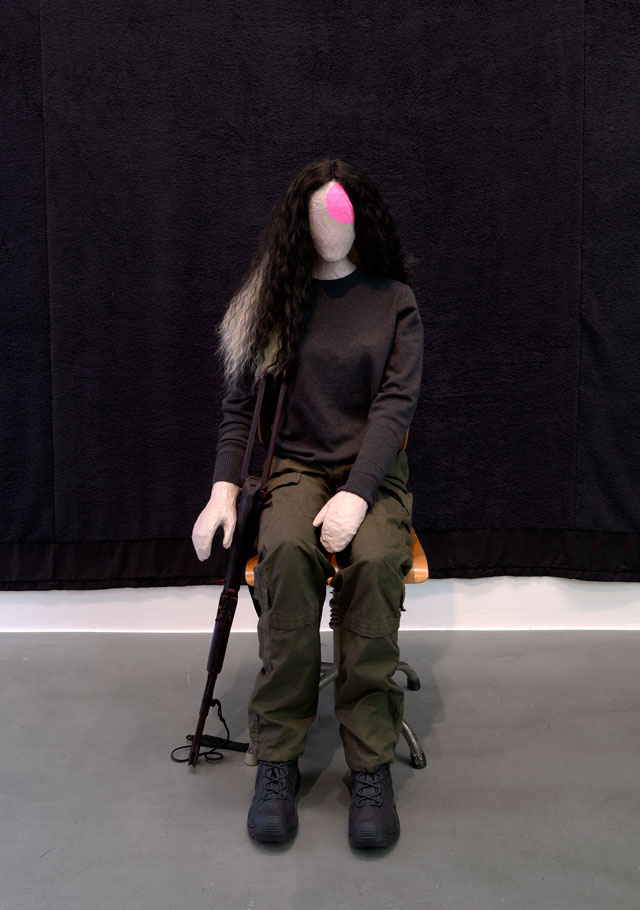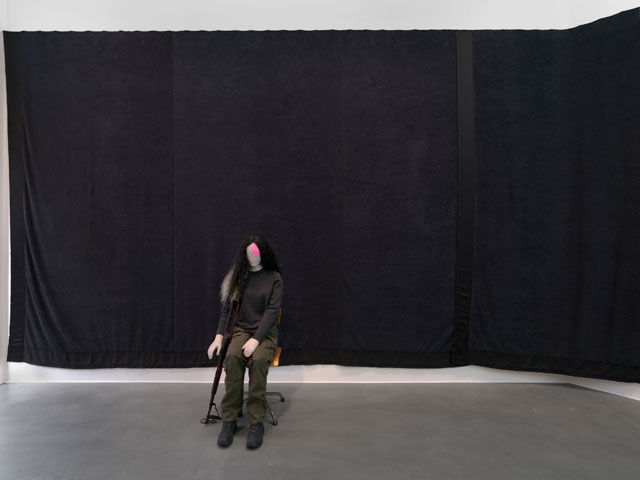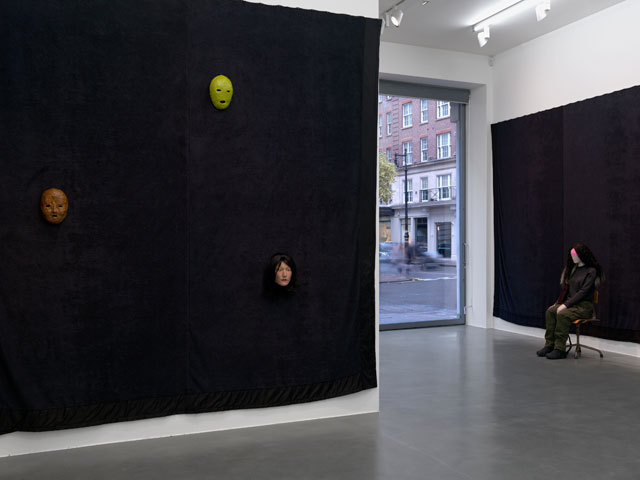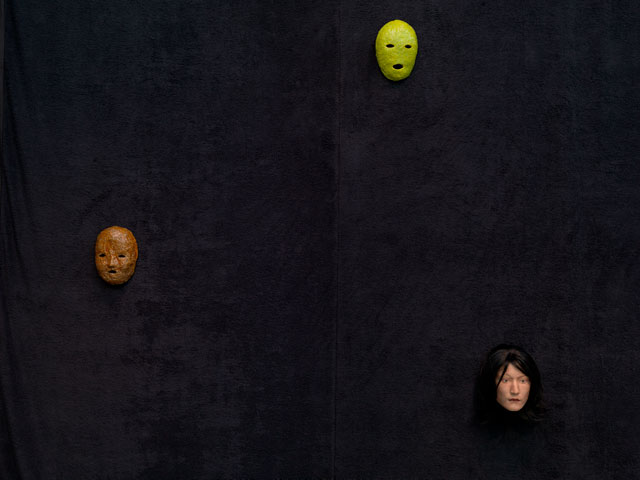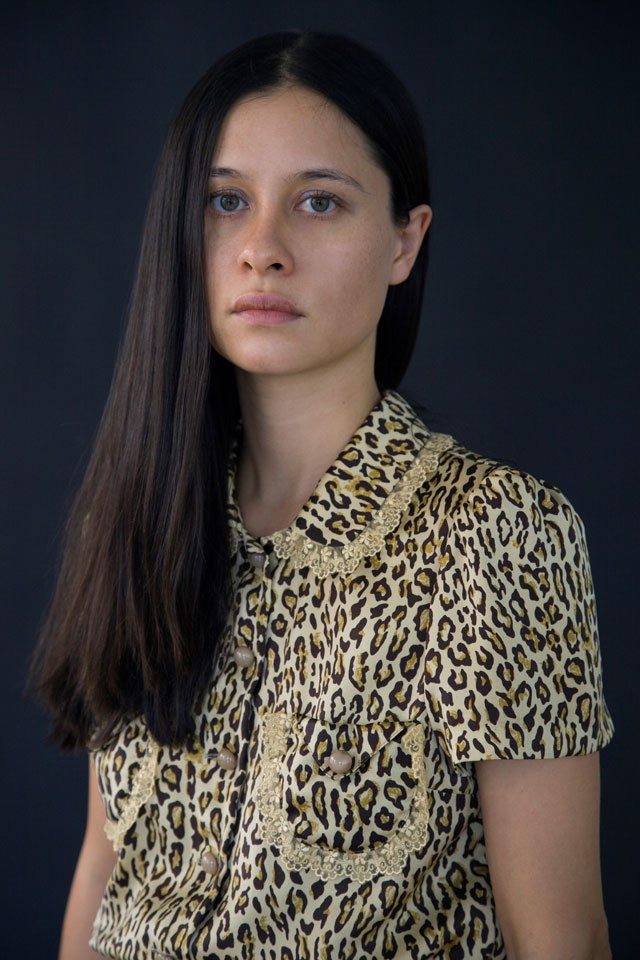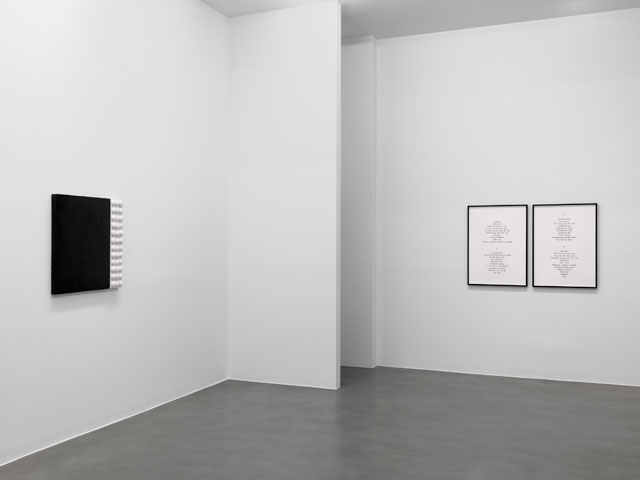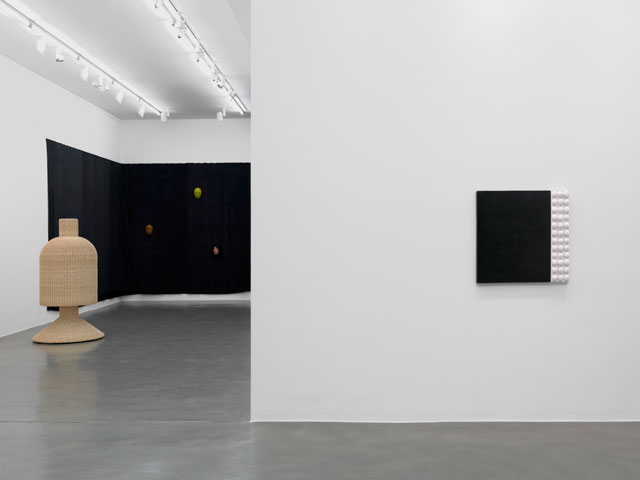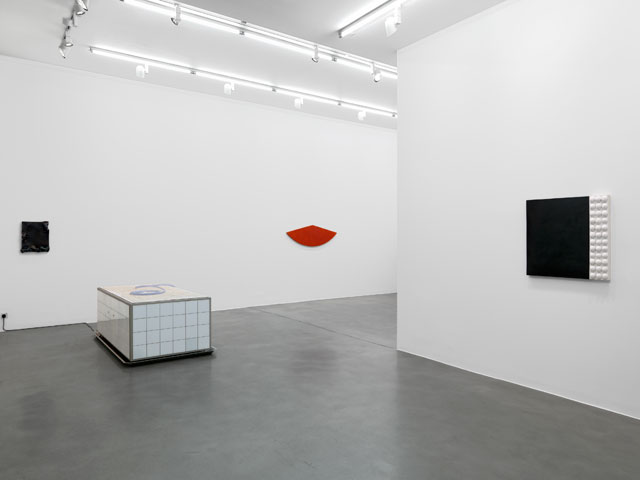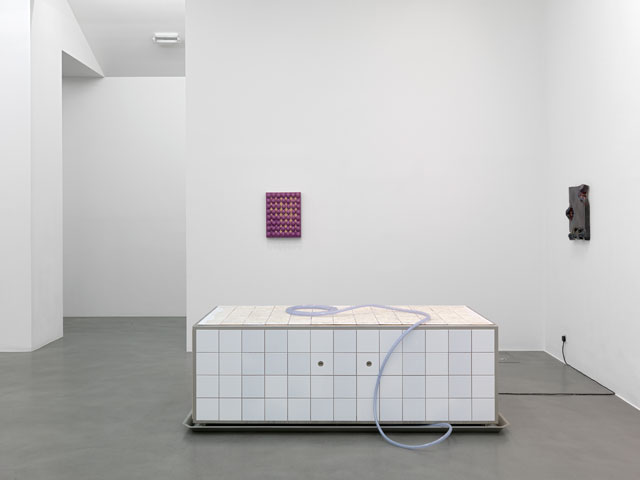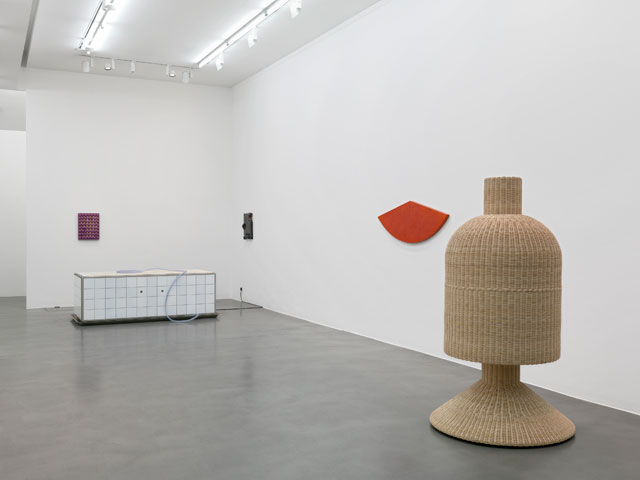

by ALEXANDER GLOVER
On 20 January 2017, I met Mai-Thu Perret (b1976), a Swiss artist of Franco-Vietnamese origin, at the Simon Lee Gallery to discuss Zone, her current exhibition there. Coincidentally, it was also the day on which Donald Trump was being inaugurated. Perhaps less coincidental was the date of her exhibition talk, the following day, which coincided with the Women’s March right on the doorstep of the exhibition at Simon Lee Gallery in Green Park, London.
As I came out of Green Park tube station that day to attend the talk, I was confronted by thousands of people who had taken to the streets to demonstrate against the Trump presidency on the first day of the new regime. During the talk, and in our interview, Perret discussed how her interdisciplinary works in Zone brought together feminist influences that included the female-only Kurdish militia, the YPJ, and old feminist fiction such as Les Guérillères, a 1969 novel by Monique Wittig, and Herland, a utopian novel published in 1915, by Charlotte Perkins Gilman. The march acted as the ideal backdrop to the talk and the exhibition. The symbiotic nature of that day was perfectly summed up with the positioning of Les guérillères (2016), a faceless, life-sized female guerrilla figure holding a rifle, sitting by the window of the gallery as the marchers passed by.
The title of the show, Zone, can refer both to a war zone and a space for meditation. All the works in this exhibition retain this juxtaposition to fulfil Perret’s interests in strategies of disruption and how different sociopolitical histories and discourses can feed into each other. The title piece, for example, Zone (2016), acts as the heart and pulse of the show, with water pumping around an altar-like ceramic fountain. As haunting as it is calming, this work suggests a surface and structure for cleaning the body – whether that is on a morgue table, or, potentially, in a hammam.
The works in this show possess strong individual narratives, but are all brought together to varying degrees by The Crystal Frontier, the fictional narrative Perret has been developing since 1999. We sat down to discuss how she has developed this narrative over the years, as well as how she employs other literary, social, art-historical, and political narratives in her works.
Alexander Glover: What drew you to creating your fictional narrative, The Crystal Frontier, in 1999, and how has it developed over the years?
Mai-Thu Perret: I knew that I wanted to be an artist and it started out as a solution to making work at the beginning. I was a literature student, but I knew very well that I didn’t want to be a novelist. When I first started making work, I created abstract paintings – which I still do. But I was finding it really difficult to justify my decisions to myself. It felt quite arbitrary.
AG: Painting itself?
MTP: Art in general, but painting especially. It was a bit frustrating, and that’s how this Crystal Frontier story came about. I was reading a lot about conceptual art and I liked the ideas of people such as Sol LeWitt, who famously said: “The idea becomes a machine that makes the art” – the idea of the concept of the work and that the work could exist before its realisation, or could even take on different realisations. But I didn’t want to remake conceptual art per se, because I was interested in something that could be more varied.
I remember seeing an exhibition by Jim Shaw where there were extremely complex narratives. I thought this was great because you’re looking at these works and they’re almost completely impossible to understand. They don’t really look linked to each other, but there is actually this huge narrative that is connecting everything. It was a series called My Mirage (1986-91).
Around the same time, I took a trip to the desert in New Mexico and Arizona and came back amazed by the sense of space and all the communes that have existed there. We visited a number of places where there had been attempts at founding autonomous communities at various points in time and I was getting very interested in the idea of communal living. I started writing about these ideas and imagining a fictional commune. I thought it would be interesting if the writing were related to the work. The narrative [for The Crystal Frontier] started to follow a commune of women who had left, at an unspecified time, an unnamed city (but it would most likely be a big western city like London or New York) because they were frustrated with their lives in the city. They wanted to have a truer relationship to their work and to themselves and so created a commune in the desert in New Mexico. I thought my artwork could then be what these women would make. I thought I would start documenting this commune almost as if it was a lost civilisation with all these diary entries or snippets. Almost like found text. The narrative then grew and became more complex as time went on. Not only was I creating objects or utilitarian things they made, but also art that they made – representations of themselves. As time went on, I would go back and forth with the narrative when preparing and making my exhibitions.
AG: What particular aspects of The Crystal Frontier did you want to focus on in this current exhibition?
MTP: I’ve left it quite open for the past couple of years. The work I make could either be a direct product of the people in The Crystal Frontier, or it could be that the narrative simply helps to explain the sensibility of the artworks in the exhibition. There’s a text work in the show, Sister, that’s much more aggressive than my previous work and could be read as quite violent. It’s about an insurgent community, a sniper during a war. I never wanted to have a story that was continuous and logical like most novels.
AG: During my preparation for this interview, I came across the 1995 book The Crystal Frontier by the Mexican author Carlos Fuentes, which comprises nine stories that make a novel. Is there any influence at all?
MTP: I haven’t actually read it. The reason I called my work that was primarily because of a really beautiful text by Robert Smithson called The Crystal Land, and also because of the novel The Crystal World by JG Ballard. I think the title also hinted at the kind of complexity I was looking for. That was much more in my mind. The curator of the show I did in Dallas last year knew about it and gave me the Fuentes novel as a present. I think I’m a little afraid to read it.
AG: Another literary influence for Zone was the 1969 novel Les Guérillères by French avant-garde writer and feminist theorist Monique Wittig.
MTP: Yes, Wittig’s influence is a new thing and very much part of this show. There are loads of other literary influences, too, which were there before, such as Charlotte Perkins Gilman’s Herland from 1915. It’s about a group of young men who go on an exploration through South America and they cross a mountain to a place that is inhabited only by women. At the beginning, they think it’s horrific because they’re quite brash and macho young guys. They are eventually imprisoned because they’re very aggressive. They then discover that this place is really well run; it’s a kind of polemical text. They basically end up in a place where women have discovered how to reproduce on their own without men and they establish a sort of benevolent matriarchy without aggression or poverty. Slowly, these young men begin to fall in love with it.
With regards to Les Guérillères, people had been telling me for years that “this book is for you” because of The Crystal Frontier. I put it off for a while, but with great books, it sometimes takes a while to get into them. It’s not the easiest book to read and it can be quite violent at times.
AG: Donald Trump was inaugurated today. Was that in the back of your mind when planning this show?
MTP: Well, like most everyone I know, I had been watching the US election campaign with dismay, and the current climate of violence and anger was very much bringing me down. The story and concerns of Les Guérillères seemed to dovetail really nicely with this obsession that I developed last year over the Kurdish female fighters, the YPJ. They are an all-female militia fighting in the Syrian civil war. As the Syrian state began falling apart, it has given some space to the Kurdish liberation movement. They have always been a repressed minority. The YPJ was created under the influence of Abdullah Öcalan, the leader of the Kurdistan Workers’ Party (the PKK), who I think is still in prison in Turkey. He had an interesting intellectual trajectory because he started out as a kind of traditional communist revolutionary and also a nationalist on the behalf of his people. When the Turks threw him in jail, he started reading a lot, including a lot of feminist work as well as poststructuralist authors such as Michel Foucault. He then, in turn, revised his ideas about how power should be distributed and he had this idea that, in the ideal Kurdish state, it would be fundamental that women and men be equal. This would stretch even to the military.
And so this Kurdish autonomous state emerged in northern Syria a few years ago and, in order to defend themselves, the people set up these male and female militias (the YPG/YPJ). I’ve watched quite a lot of documentaries about them, and the female armies (YPJ) really are quite powerful. But the documentaries also reveal their daily lives. Of course, war was in the background, but the film footage shows the YPJ cooking, keeping dogs, seeing friends, and singing – things you wouldn’t necessarily associate with war – and I thought these aspects merged really well with the narrative of Les Guérillères as it was also about these kinds of rituals that women have together.
AG: Could you talk about the first work we see in Zone, the figure of the YPJ soldier called Les guérillères XII (2016). Is there a symbolism attached to your material choices such as with the bronze feet and papier-mache feet?
MTP: It’s not necessarily symbolism. I like using bronze because I like the idea of incorporating quite a traditional sculpture material. When I made the first of these figures for an exhibition in Dallas last year, I had an urge to portray these female warriors. I also thought it was interesting to do in Texas because of the gun culture there. The other thing that I wanted to do was use a large spectrum of materials. To create a large array of different realities or styles and have them coincide in one example. In a way, you can see it as an index of materials that I had used in the past, including some figures made entirely of ceramics.
AG: You use ceramics frequently.
MTP: Yes I do, I think it’s because it’s such a fluid, tactile and amorphous material. I also really like that it’s a material that you have in your everyday life. It’s in your bathroom or makes up your dinner plate. I really like that. It has a domestic feel to it.
AG: Could you talk about your process for making your text work in this show, Sister (2016)?
MTP: I really wanted to write something that had the form of a poem in a very modernist sense. I had this narrative about a sniper and I wanted the text to be about the sniper looking for her friend. So, this simple scenario was the beginning for it. The sniper is somewhere with her gun and she is supposed to join up with another friend, but the friend is not answering. There were also some verses from an Apollinaire poem called La chanson du mal-aimé, about unrequited love, that I really liked. I had this verse in my head that I was trying to translate (from French) and piece together with onomatopoeic language. That’s also very early 20th century, like Dada poems. A fractured narrative.
AG: What do you have planned next?
MTP: I really want to put together a book and to write more things in the same vein as Sister. I’m working on a show in Los Angeles where there’s going to be a lot of ceramic works. I’m also working on a performance piece for the Kitchen in New York, which will assume some of the themes in this show but use them in a performance setting.
• Mai-Thu Perret: Zone is at the Simon Lee Gallery, London, until 4 February 2017.
